The Mourne Wall in County Down truly is a sight to behold.
The Mourne Mountains are an iconic mountain range in Northern Ireland that stretch from Carlingford Lough to the seaside town of Newcastle.
One of their most unique features is the outstanding Mourne Wall which is 22 miles in length and took 18 years to build.
Some quick need-to-knows about the Mourne Wall
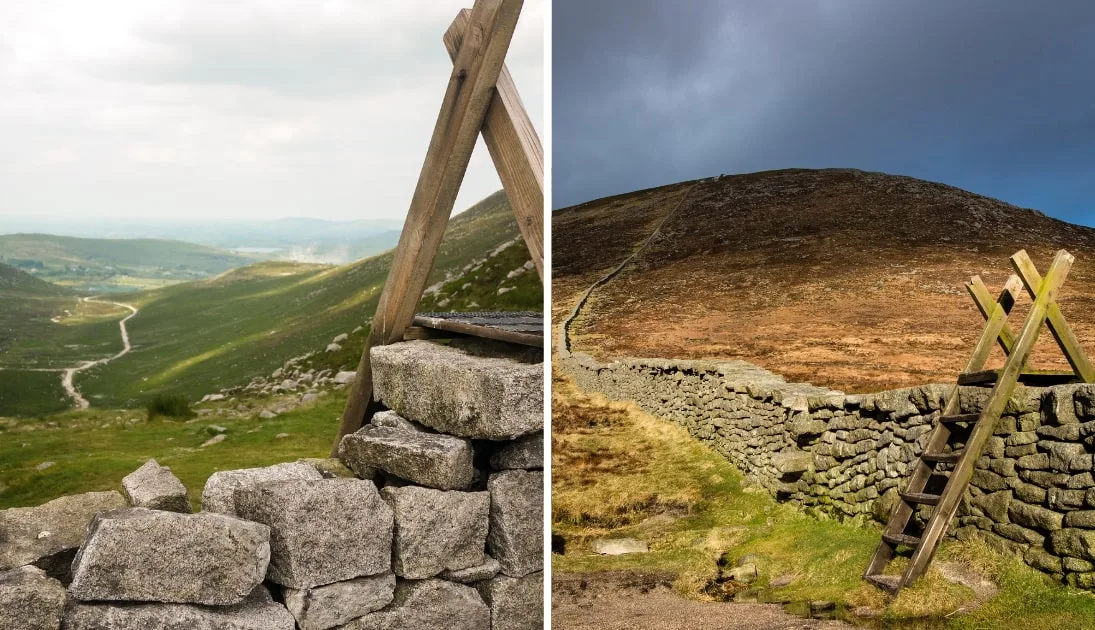
Photos via Shutterstock
Before we delve into the story of this mighty feat of stone masonry, let’s take a look over the basics.
1. Location
The Mourne Mountains are located in Northern Ireland’s County Down. They rise up abruptly from the sea at Carlingford Lough, cutting across the land to the town of Newcastle. The Mourne Wall is built around the Silent Valley Reservoir and circles the catchment area.
2. Length
The total length of the Mourne Wall is 22 miles and the average height is 1.5 metres. The wall is around 80 cm thick in most places.
3. Construction
This impressive wall is constructed entirely out of local granite stone. Stonemasons used traditional dry stone walling techniques to build it up, reshaping nature in the process.
4. It passes over 15 of the tallest mountains in the area
The wall circles the Silent Valley Reservoir and passes over the summits of 15 of the tallest mountains in the Mourne Mountain range. Hikers typically use it as a guide when mountaineering and the sight of it snaking its way through the mountains is breathtaking.
5. The Mourne Wall Challenge
A 22-mile monster hike that sees intrepid trekkers climbing and descending all fifteen on the mountains that the wall follows. It’s possible to complete it in one, long, and very arduous day, but it’s certainly not beginner-friendly.
The story behind the building of the Mourne Wall
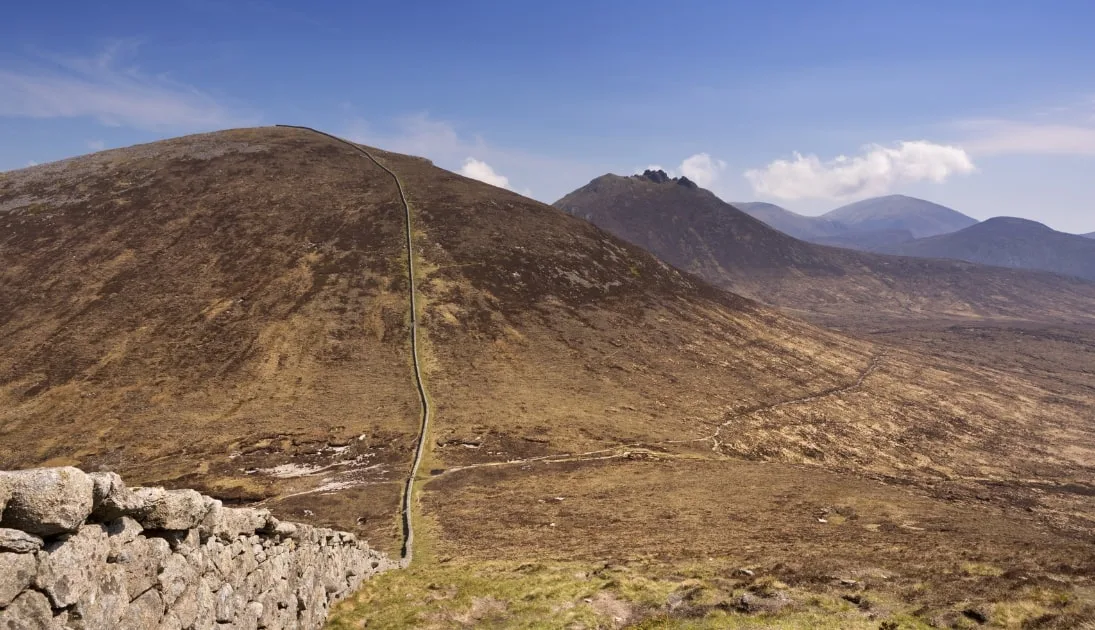
Photo via Shutterstock
So what’s the deal? Who decides to build a drystone wall up and down some of the highest mountains in Ireland? And why? Let’s find out.
When it was built
Rather than being an eccentric statement of man versus nature, the Mourne Wall actually served a vital task. It took 18-years to build and was constructed between 1904 and 1922.
At that time, Belfast was rapidly expanding and in order to ensure water supply to the city and surrounding area, the construction of a reservoir in the Mourne Mountains was proposed as a long-term solution.
To this day the Silent Valley Reservoir, built between 1923 and 1933, continues to provide water to all of County Down and a large portion of Belfast.
Why it was built
But before the reservoir could be built, the catchment area needed to be defined and closed off.
The main purpose of the Mourne Wall was to prevent farm animals from reaching the reservoirs and the rivers that feed them.
In those days, the advanced water filtration systems we utilise today didn’t exist, and cattle or sheep could easily contaminate the water supply.
How it was built
For 18 years, stonemasons worked on the wall between March and mid-October, until winter forced them to down tools.
They expertly took granite from the surrounding area and through traditional techniques such as rock splitting, they were able to transform it into a sturdy wall.
Working by hand, they placed each rock in such a way that would ensure the wall would stand for hundreds of years, without mortar or adhesive of any sort.
That would be impressive under regular circumstances, but these guys were doing this in often freezing and wet weather, up and down extremely steep mountain slopes!
Restoration of the wall
Over the last century, harsh mountain weather, lightning strikes, and human interference has seen some sections of the wall fall into disrepair.
Surveyors calculated that a total of around four miles of the wall were effectively missing when the damaged sections were added together.
However, since 2018 a team of local stonemasons has been working to renovate the sections that are in need of some tender loving care. Each of the masons has relations who worked on the original wall a century earlier.
Like their predecessors, they too work from March to October, using the same techniques and materials to fill in the gaps and ensure the wall will stay standing for another 100 years at least.
The Mourne Wall Challenge
Up for a challenge? The Mourne Wall Challenge is a beast! If you fancy tackling fifteen mountains in a day, including seven of the highest in the Mourne Mountain range, and Slieve Donard, the highest peak in Northern Ireland, this is the hike for you.
Seriously though, this 22-mile circular trek isn’t a hike you can just do on a whim. You’ll need to be in good shape with decent hiking gear and supplies. Mountaineering experience is essential too.
Packing too much can be your downfall, but not carrying enough water can also be dangerous as flowing water isn’t always available in dry weather.
Warnings aside, if you manage it, the views are amazing, and along with the tranquillity of the area, it’s well worth the effort. Plus, you can always break it into two or three days and take your time with it.
Mourne Wall walks
You don’t have to tackle the Mourne Wall Challenge in order to make the most of this stunning area.
The following hikes in the Mournes let you get close to the mighty wall and marvel at the craftsmanship.
1. Slieve Donard
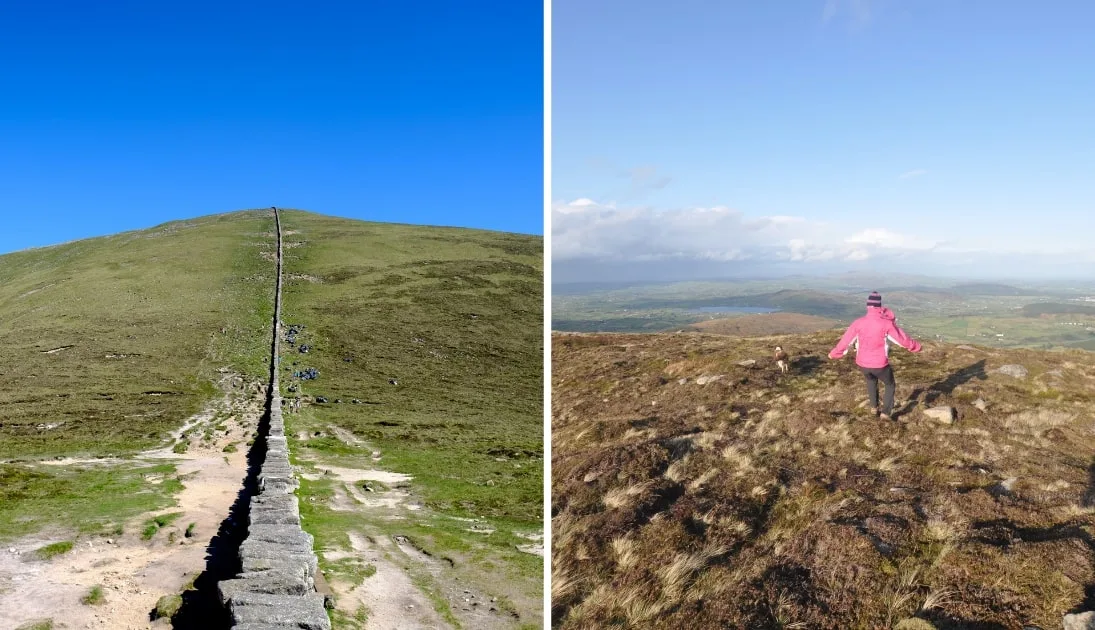
Photos via Shutterstock
If you’re in the area and looking to do a little hiking, Slieve Donard is a must. At 850 metres tall, it’s Northern Ireland’s highest mountain. It boasts incredible views out to sea and across the surrounding landscape.
The hike to the summit and back covers around 9.2 km in total, with some steep, rocky sections, and normally takes between 4 and 5 hours. As you near the summit, you’ll reach the Mourne Wall.
Related read: Check out our guide to 8 of the handiest Mourne Mountain hotels to use as a base camp
2. Slieve Binnian
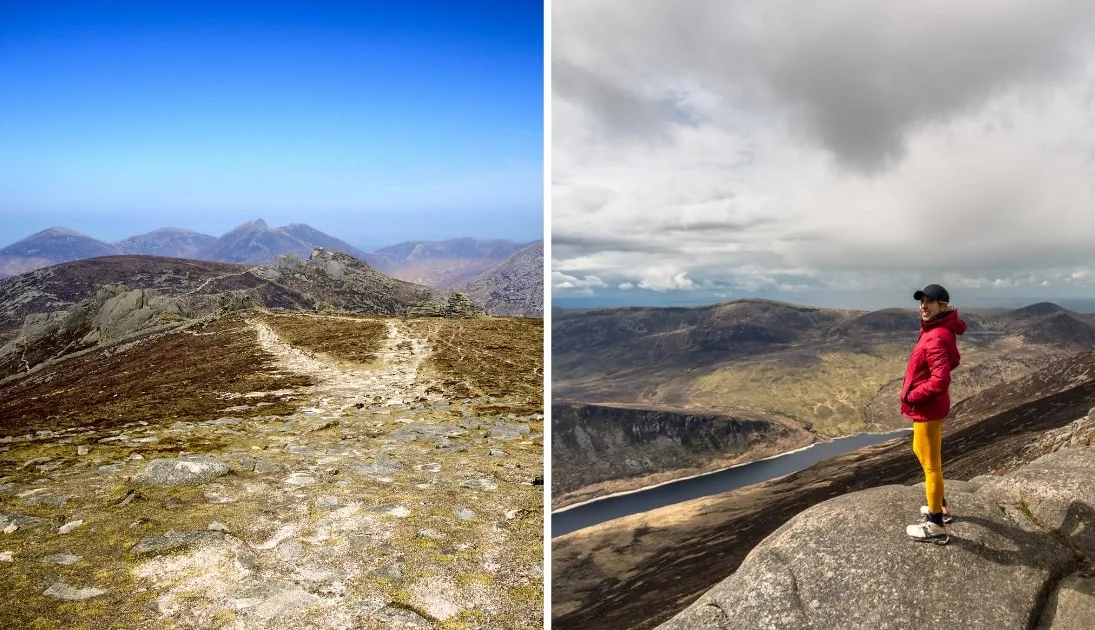
Photos via Shutterstock
The trail up to the summit of Slieve Binnian is one of my favourites in the entire range. It’s a challenging but manageable seven-mile loop that follows the Mourne Wall for much of the way.
You’ll be treated to gorgeous views and sights like the Blue Lough and the stunning North and South Tors. On the way back, you pass through the atmospheric Annalong Forest.
3. Slieve Doan

Photos with thanks to @headinthewild
Sitting in the centre of the Mourne Mountains is Slieve Doan. It’s not as well travelled as some of the other peaks, possibly because the Mourne Wall doesn’t cross its summit.
However, it’s well worth checking out, and you will pass the wall along the way. Starting at Ott car park, it’s an 8 km there and back trail of moderate difficulty that offers some impressive views over the Silent Valley Reservoir.
Rugged and peaceful, it’s a great way to spend four or five hours.
4. Slieve Bearnagh
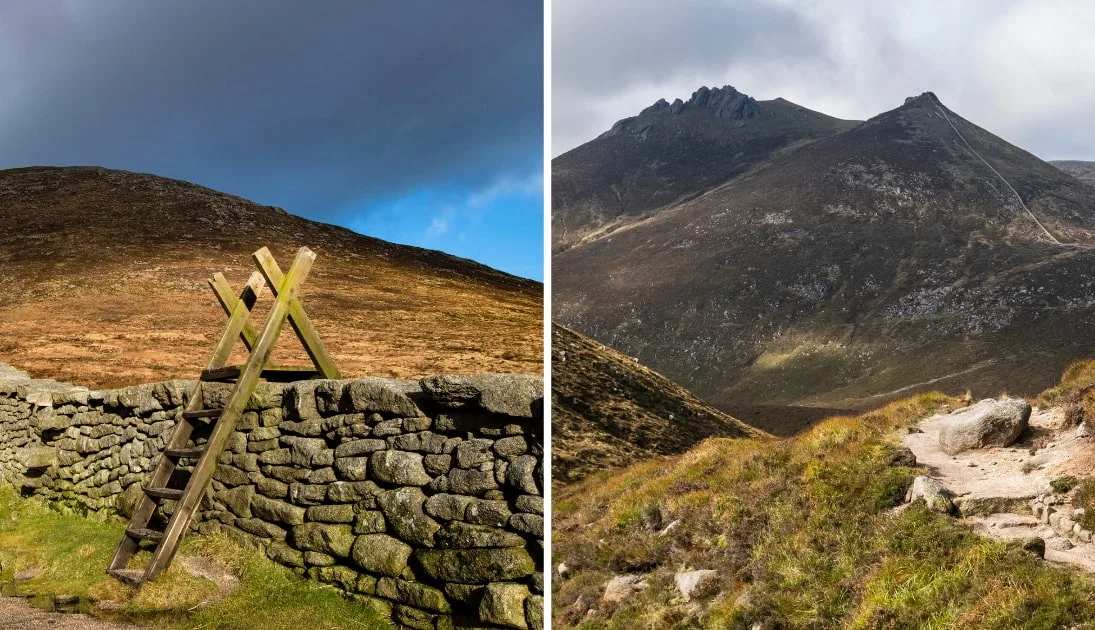
Photos via Shutterstock
Slieve Bearnagh is one of the more strenuous hikes in the Mourne Mountains, but the steep climbs and rocky paths are well worth tackling.
Offering Lord of the Rings-style scenery and amazing views across the surrounding countryside, it’s a tough 10 km hike that you should allow at least five hours for.
FAQs about the Mournes Mountain wall
We’ve had a lot of questions over the years asking about everything from ‘Which walk encounters it?’ to ‘How high is it?’.
In the section below, we’ve popped in the most FAQs that we’ve received. If you have a question that we haven’t tackled, ask away in the comments section below.
Why was the Mourne Wall built?
The Mournes Mountain wall was built to define a catchment area around the soon-to-be-built reservoir, to stop farm animals reaching the water.
How long is the Mourne Wall?
The total length of the Mourne Wall is 22 miles and the average height is 1.5 metres. The wall is around 80 cm thick in most places.
Who built the Mourne Wall?
Over the course of 18 long years, stonemasons worked on the construction of the Mournes Mountain wall between March and mid-October every year.

